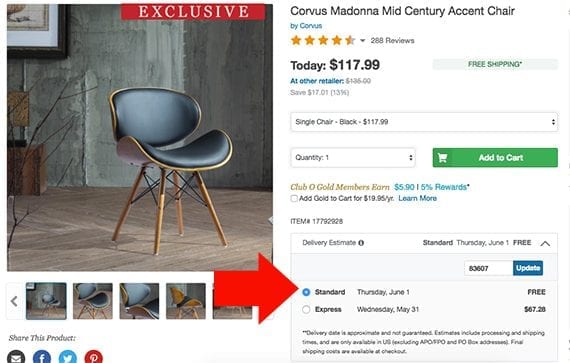PIM for Digital Product Passport: Seamlessly Sourcing & Managing Compliance Data
As the EU rolls out new sustainability regulations, the need for accurate, accessible product data has never been greater. That’s where a PIM for Digital...
Published: May 26, 2023 Updated: Jun 20, 2025
PDP stands for product detail page. These pages are used on eCommerce sites to help provide a thorough product description for an enhanced customer experience. Without PDPs, customers wouldn’t find the information they need to make an informed buying decision. Therefore, they play an essential role in eCommerce. Here we look at everything you need to know about PDPs.
eCommerce customers want information now. That info is provided through product detail pages. It puts information front and center, with all the details needed to increase conversions. It limits the number of questions customers have and provides confidence to make quick decisions. In addition, it’s your first and last chance to make that conversion, convincing customers they can’t live without what you sell.
A PDP provides specific information on a product, including:
A strong PDP facilitates positive buying decisions, helps build brand trust, and reduces returns by meeting customer expectations.
The goal of your PDPs is to provide anything you can possibly imagine a customer would need to know:
Consider your typical customer’s buying habits and ensure what tends to attract them the most is clear the moment they land on the product page.
Read customer reviews and get a feel for the language they use to describe your product. Along with product details, it helps to include user-generated content so customers see how it has helped other buyers.
According to Semantic Scholar, high-quality digital assets with enhanced viewing capabilities can increase conversion rates by up to 40%. Therefore, your digital assets must be of the highest quality.
What are the possible objections customers would have?
Providing information that overcomes common objections eliminates doubt and ensures customers make a purchase.
Leading eCommerce sites like Amazon use the following PDP best practices:
Always make it easier for a customer to make a purchase. The ideal PDP includes a prominent CTA so they can proceed to the shopping cart
Include keywords, use Latent Semantic Indexing, and don’t forget Meta titles and Meta descriptions for your digital assets.

An easy-to-spot price, along with relevant area tax laws is a must.
Have an overview for the scanners who want a short and sweet explanation of the price, and an extended version for the detail-oriented person who wants that extended version.

You need high-quality product imagery with different viewing options, so customers can get a look at the product just like they were picking it up at the store. Include thumbnails, enhanced zoom, 360°, and 3D views.
You can also create helpful how-to videos that show customers how the product works and enable them to explore the features and benefits from all angles. It also helps with your SEO efforts by keeping visitors on the page longer.
Customers feel more trusting and confident when shopping online if they don’t feel they’ll be stuck with a product that doesn’t meet their expectations. The more detailed your PDPs, the more confidence they’ll have. However, knowing they can return an item hassle-free if the product isn’t right is a further incentive to make that purchase.
Don’t make delivery a guessing game. Let people know the cost and delivery times down to the minute when they can receive their item. If there’s a cut-off time for same or next-day delivery, post it. If there are limitations to the delivery method, let them know. Again, it boils down to trust, along with good old-fashioned customer service.
Make it clear if an item is low to create a sense of urgency.
If your products are sustainable, let customers know why, as this is always a big selling point.
Make it easy to customize orders based on size, color, fit, etc.

Add those ratings and reviews to boost confidence and improve SEO.
By picturing your highest maintenance customer on the planet, you’ll get an idea of the level of information needed when creating the ultimate PDP.
When you optimize your product detail pages, you mirror the in-store experience improving the buyer journey, increasing Click-Through Rates (CTRs), and improving conversions.
To make managing PDPs and digital assets easier, a Product Information Management (PIM) system can help. Interested in learning more? Schedule a demo of Pimberly’s PIM/DAM software to see how it works.


